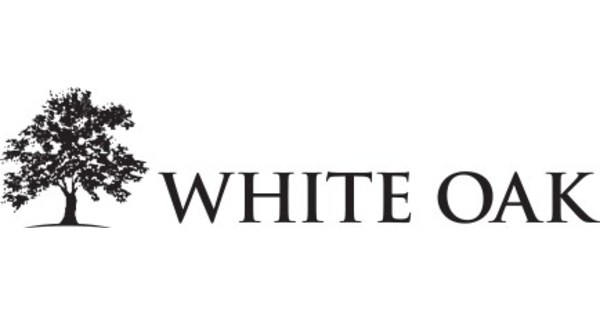The Critical Role of Emergency Signage in Ensuring Public Safety
Introduction to Emergency Signage
Emergency signage plays a significant role in guiding occupants to safety during critical situations. From natural disasters to fire outbreaks, these signs provide clear and visible directions that facilitate orderly evacuations. Understanding their importance can make a substantial difference in safety protocols. For instance, a no exit sign prevents confusion by clearly marking areas that do not lead to an exit.
The effectiveness of such signage is not just theoretical. Many studies demonstrate the impact of proper signage on reducing panic and aiding swift evacuation. Thus, integrating various types of emergency signs is a foundational element of building safety, helping to direct individuals safely during chaotic scenarios.
Types of Emergency Signage
There are several types of emergency signs, each serving a unique purpose. These signs must be carefully selected and strategically placed to optimize safety during emergencies:
- Exit Signs: These indicate the safest and most direct route to exit a building, providing crucial guidance during evacuations.
- No Exit Signs: As the name suggests, these signs identify areas that do not lead to an exit, thereby preventing confusion during evacuations and guiding people toward the correct pathways.
- Fire Safety Signs: These signs highlight locations of critical fire safety equipment, such as fire extinguishers, alarms, and hose reels, ensuring that individuals can easily locate and use these resources in an emergency.
- First Aid Signs: These instruct individuals on where to find first aid stations or equipment, which can be vital for providing immediate care to those injured during an emergency.
Among these, photoluminescent exit signs are particularly noteworthy for their ability to glow in the dark. This feature makes them invaluable during power outages, ensuring that the exit pathways remain visible even in low-light conditions.
Regulatory Standards and Compliance
Compliance with local and international safety standards is vital for the effectiveness of emergency signage. For instance, the Occupational Safety and Health Administration (OSHA) provides detailed guidelines on the design, placement, and maintenance of these signs to ensure they are easily seen and understood by everyone in the building.
Adhering to these standards not only enhances safety but also minimizes legal liabilities. Regular inspections and updates to signage systems are essential practices for maintaining compliance. These inspections ensure that signs are in optimal condition, clearly visible, and free of obstructions, greatly enhancing their efficacy during emergencies.
Placement and Visibility
Strategic placement of emergency signs is crucial for their effectiveness. Signs should be located at key decision points such as stairwells, elevators, and corridors. Key decision points are areas where individuals might be uncertain about the direction they should take. Proper placement mitigates this uncertainty, guiding people efficiently to safety.
High visibility is a must, which can be achieved through proper lighting and contrast against the background. Photoluminescent signs, for example, should be installed in areas prone to darkness during power failures, ensuring they are easily visible even without external light sources. Ensuring these signs stand out against their surroundings is critical to catching people’s attention swiftly.
Maintaining Emergency Signage
Regular maintenance of emergency signage is a crucial aspect of preparedness. This includes cleaning signs to prevent obstructions that could impede visibility, checking for any signs of damage or wear, and replacing any outdated or non-compliant signs. Maintenance routines should be conducted by qualified personnel to ensure reliability and effectiveness.
Documenting these maintenance routines is also essential. It provides a record that can be reviewed to ensure consistent and thorough upkeep of all emergency signage. Consistent maintenance ensures that signs remain compliant with evolving safety standards and continue to serve their critical function effectively.
Integrating Modern Technologies
Modern technology like smart sensors and LED illumination can be integrated to further increase emergency signage’s efficacy and visibility. LED signs are not only energy-efficient but also provide consistent illumination that can be critical during emergencies. These modern signs are less likely to fail and can often be seen from greater distances, making them a valuable addition to any emergency signage plan.
Smart sensors can alert building management to any obstructions or malfunctions in the signage system, ensuring that any issues are promptly addressed. This real-time monitoring capability is indispensable for maintaining the readiness and reliability of emergency signage in any situation.
Best Practices for Effective Emergency Signage
Implementing the following best practices can enhance the efficiency of emergency signage:
- Conduct regular safety drills to train occupants on recognizing and following emergency signs. This prepares everyone in the building to respond quickly and correctly during actual emergencies.
- Ensure that signs are bilingual or use universally recognized symbols to accommodate all occupants. This inclusivity ensures that anyone, regardless of language proficiency, can understand the directions provided.
- Review and update emergency signage plans regularly to incorporate new safety protocols and technologies. As safety standards evolve and new technologies emerge, keeping your signage up-to-date ensures ongoing compliance and effectiveness.
Conclusion
In conclusion, effective emergency signage is a cornerstone of building safety. By understanding different types of signs, adhering to regulatory standards, ensuring proper placement and maintenance, and integrating modern technologies, we can significantly enhance public safety and ensure readiness in any emergency situation.
Emergency signage not only helps guide people during crises but also plays a preventative role by reducing confusion and panic. Ensuring that your building is equipped with the right types of signs, strategically placed and well-maintained, is a proactive step towards protecting lives and maintaining safety.







